Books by Michael R. Jost
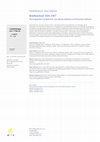
Rudolf Bultmann und Oscar Cullmann zählen zu den bedeutendsten Neutestamentlern und Theologen des... more Rudolf Bultmann und Oscar Cullmann zählen zu den bedeutendsten Neutestamentlern und Theologen des 20. Jahrhunderts. Ihre Publikationen werden bis in die Gegenwart in unterschiedlichen Sprachen neu aufgelegt. Am Anfang war ihre Beziehung von gegenseitiger Wertschätzung und regem publizistischem Austausch geprägt. Immer mehr führte aber die Ausarbeitung unterschiedlicher theologischer Konzeptionen zum kritischen Diskurs, der in den o enen Widerspruch mündete. Dennoch standen sie zeitlebens-mit einigen Unterbrechungen-miteinander in einem wohlwollenden Briefwechsel. In diesem Band werden alle erhaltenen Briefe und Postkarten dieser Korrespondenz in einer kommentierten Fassung vorgelegt. In zehn Studien werden zusätzlich die Werke der beiden Theologen aus zeitgeschichtlicher, hermeneutischer und exegetischer Perspektive analysiert und für die gegenwärtige theologische Arbeit ausgewertet.
Open Access: https://www.mohrsiebeck.com/buch/briefwechsel-1926-1967-9783161616297

Das Motiv einer Gemeinschaft mit den Engeln im Gottesdienst lässt sich in frühjüdischen und neute... more Das Motiv einer Gemeinschaft mit den Engeln im Gottesdienst lässt sich in frühjüdischen und neutestamentlichen Texten finden. Michael R. Jost untersucht erstmals alle Belege aus Qumran und dem Neuen Testament exegetisch und diskutiert sie im Kontext traditionsgeschichtlicher Entwicklungen ausgehend von alttestamentlichen Aspekten bis hin zu rabbinischen und frühchristlichen Perspektiven. Besondere Berücksichtigung erfahren die liturgischen Texte, deren Wirkung auch in performativer Perspektive untersucht wird, womit nach der im Gottesdienst erfahrenen Gemeinschaft gefragt wird. Damit bietet der Autor neue Einsichten sowohl für die Qumran Forschung in der Analyse der liturgischen Gemeinschaft des yaḥad, als auch für die neutestamentliche Forschung und das urchristliche Gottesdienstverständnis.
Communion with Angels in Earthly Worship. Studies on Qumran and New Testament Texts.
The motif of liturgical communion with angels appears in early Jewish and New Testament texts. Michael R. Jost offers the first exegetical analysis of all relevant passages from the Dead Sea Scrolls and the New Testament and places them within traditio-historical developments from the Hebrew Bible to rabbinical and patristic texts. By giving special consideration to the respective performances of liturgical texts, the author reconstructs each groups’ experience of angelic communion. In his analysis of the liturgical communion of the yaḥad, Jost presents new insights not only for Qumran research but also for New Testament scholarship and the understanding of the early Christian communities and communal liturgies.
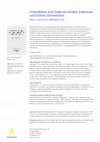
Gewisse frühjüdische und neutestamentliche Texte beschreiben eine Verbindung der himmlischen und ... more Gewisse frühjüdische und neutestamentliche Texte beschreiben eine Verbindung der himmlischen und irdischen Gemeinde im Gottesdienst oder setzen diese voraus. Exegetisch erlangte das Thema insbesondere durch die Textfunde von Qumran Aufmerksamkeit. Die Thematik ist aber auch relevant für das ökumenische Gespräch mit den östlich-orthodoxen Kirchen, in deren Liturgien gerade die Teilnahme der himmlischen Welt am irdischen Gottesdienst eine herausragende Rolle spielt. Systematisch spielte die Fragestellung zudem im Werk des katholischen Theologen Erik Peterson und seiner Diskussion mit Karl Barth eine Rolle.
Der vorliegende Sammelband dokumentiert die Beiträge einer Tagung an der Theologische Fakultät der Universität Zürich zur Beziehung von Gottesdienst und Engeln in antik-jüdischer, rabbinischer, neutestamentlicher, frühchristlicher, liturgiegeschichtlicher und systematischer Perspektive.
Articles in German and English
Book chapters / articles by Michael R. Jost
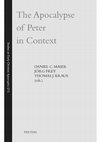
Studies on Early Christian Apocrypha, 2024
What is expected from judgment? What is the purpose of punishment and what is the function of hel... more What is expected from judgment? What is the purpose of punishment and what is the function of hell? With these questions in mind, I turned to the Qumran writings. And the results surprised me, because the answers in these writings differ at crucial points from the message of the Apocalypse of Peter. The idea of an eternal torment in hell was not a matter of course in early Jewish writings. Instead there is the idea of annihilation. If we dig deeper, we can see, among other things, that these two views are based on different concepts of how life is defined. These findings now need to be discussed with regard to the New Testament.
I present the findings in three steps. I begin with the texts from Qumran, whose origin are assumed to be in the yahad. Then, I bring in insights from 1 Enoch, which reveal a different understanding in certain aspects. Finally, I evaluate these insights from the texts of the yahad and 1 Enoch in relation to the study of the Apocalypse of Peter.
Römische Reminiszenzen zwischen lebendiger Tradition und literarischer Rezeption, in: Jörg Frey/J... more Römische Reminiszenzen zwischen lebendiger Tradition und literarischer Rezeption, in: Jörg Frey/Jens Scrhöter/Martin Wallraff (Hg.), Paulusmemoria und Paulusexegese. Römische Begegnungen, Rom und Protestantismus – Schriften des Melanchthon-Zentrums in Rom 5 (Tübingen: Mohr Siebeck, 2023), 235-254.
Ich gehe der Frage nach, was der 1. Clemensbrief von Paulus weiss und woher er diese Kenntnisse hat.
Traces of the Apostle Paul in 1Clem. Roman reminiscences between living tradition and literary reception. I explore the question of what the 1st Letter of Clement knows about Paul and where it got this knowledge from.
Early Christianity, 2023
It is well known that the Spirit plays a central role in the Fourth Gospel. Nevertheless, the his... more It is well known that the Spirit plays a central role in the Fourth Gospel. Nevertheless, the history-of-religions context of the Johannine Pneuma-Paraclete is a controversial issue in scholarship. So far, the discussion has mostly been oriented toward the meaning of πνεῦμα. In contrast, the present article also asks what the discourse on the δαιμόνιον contributes to the Johannine understanding of the Spirit, which is why a special focus is placed on the Daimonion of Socrates in (Middle) Platonic philosophy. From here, new insights arise both for the history-of-religions context of the Johannine Pneuma-Paraclete and for Johannine pneumatology.

“Sectarian and Non-sectarian Literature: What Does It Mean and How Does this Distinction Work Tod... more “Sectarian and Non-sectarian Literature: What Does It Mean and How Does this Distinction Work Today? With a Short Case Study on the Songs of the Sabbath Sacrifice”, in Emerging Sectarianism in the Dead Sea Scrolls, ed. John J. Collins and Ananda Geyser-Fouche, STDJ 141 (Leiden: Brill, 2022), 33–54.
The search for the origin of the sectarian movement in the Dead Sea Scrolls is related to the question of the origin of the Dead Sea Scrolls. But not all texts in the Dead Sea Scrolls are connected in the same way to the community that gathered them. So, what is the relationship of this literature to the movement? Which writings originate from this community, so that we can see its self-understanding in it? Which writings were merely transmitted and copied by the community (like the biblical writings, for example)?
In the following, I will systematize the complexities that have been uncovered in history of research and propose some clarifications for future research. Then, I will use the Shirot Olat ha-Shabbat as a test case. I will argue that the aim behind this distinction is still valid and should not be abandoned. But the distinction needs to be modified and refined according to the new insights.
Michael (Angel)
EBR Article

Publiziert in: Jörg Frey/Nadine Ueberschaer (Hg.), Johannes verstehen. FS Jean Zumstein, BThSt 18... more Publiziert in: Jörg Frey/Nadine Ueberschaer (Hg.), Johannes verstehen. FS Jean Zumstein, BThSt 186 (Göttingen: Vandenhoeck & Ruprecht, 2021), S. 107–127.
"Ich sage euch nicht, dass ich den Vater für euch bitten werde". So lautet eine überraschende Formulierung im Munde Jesu in Joh 16,26b, denn sie steht in einer gewissen Spannung mit der intercessio Jesu, die an anderen Stellen des Neuen Testaments zur Sprache kommt (1Joh 2,1). Vertritt Jesus die Gläubigen etwa nicht im Gebet? Welcher Sachverhalt drängt in der Erzählung Jesus dazu, diese etwas umständliche Negativformulierung anzuführen? Diese Wendung lässt aufhorchen, nicht in ihrer Aussage an und für sich, sondern weil sie auf eine tieferliegende Frage zu antworten scheint. Offenbar muss eine falsche Ansicht korrigiert werden, die das persönliche Bittgebet der Jünger Jesus delegiert. Dem hält Jesus hier die Liebe des Vaters zu den Jüngern entgegen (Joh 16,27). Die Jünger können sich selbst an den Vater wenden. Im Kern soll also die Beziehungsstruktur im Bittgebet präzisiert werden.
Demzufolge soll im vorliegenden Beitrag die Beziehungsstruktur von Vater, Sohn, Heiliger Geist und Jünger im Bittgebet näher untersucht werden, um letztlich eine Interpretation dieser überraschenden Formulierung in Joh 16,26 bieten zu können. In drei Schritten nähern wir uns dabei diesem Ziel. Im ersten Teil untersuche ich, wie das Bittgebet der Jünger in den Abschiedsreden zur Sprache kommt. Von besonderem Interesse sind dabei die Beziehungen, wie sie in diesen Belegstellen beschrieben werden. Danach wende ich mich im zweiten Teil den Parakletsprüchen zu. Diese sind besonders bedeutsam, um das Verhältnis der nachösterlichen Gemeinde zu Gott Vater, Sohn und Heiligem Geist zu beschreiben. Im dritten Teil führe ich die gewonnenen Erkenntnisse hinsichtlich des Bittgebets der Jünger und der Beziehungsstruktur in den Parakletsprüchen zu einer Interpretation von Joh 16,26 zusammen und diskutiere die Ergebnisse mit Blick auf neuere systematische Beiträge zum Bittgebet.

Published in: La ‘sacerdotalisation’ dans les premiers écrits mystiques juifs et chrétiens. Actes... more Published in: La ‘sacerdotalisation’ dans les premiers écrits mystiques juifs et chrétiens. Actes du colloque international tenu à l’Université de Lausanne du 26 au 28 octobre 2015, eds. Simon Mimouni/Louis Painchaud/David Hamidovic, Judaïsme antique et origines du christianisme 22 (Turnhout: Brepols, 2021), p. 145–164.
Abstract
The Songs of the Sabbath Sacrifice (4Q400-407; 11Q17 and Mas1k), also known as Angelic Liturgy, unveils the service of the angelic priests in the heavenly presence of God. This general observation shows the importance of the priestly task, but at the same time it leaves the earthly dimension. In this article I analyze the impact of the liturgy and communion with angels on the priesthood. This allows to clarify the significance of this composition for the community that transmitted this circle of 13 songs. First, I look at some general information on the manuscripts and the contents of these Songs. Secondly, I describe the priestly elements. This will result in an ambivalent conclusion. Priesthood is indispensable but at the same time it is not determining the community. It is the liturgy that is constitutive. Thus, in the third place, I show the importance and influence of this liturgy for the self-identification and understanding of the liturgical reality of the yaḥad. Indeed, I present an interpretation of the Songs of the Sabbath Sacrifice in the context of the other Dead Sea Scrolls, although the possibility that this composition precedes the yaḥad is discussed.

Since the discoveries of the first Dead Sea Scrolls, the motif of a communion with the angels has... more Since the discoveries of the first Dead Sea Scrolls, the motif of a communion with the angels has been repeatedly emphasized and discussed as a characteristic of the self-understanding of the community behind these writings. Of particular interest in this discussion are the Songs of the Sabbath Sacrifice (4Q400-407; 11Q17; and Mas1k ShirShabb). However, the origin of the so-called Angelic Liturgy is still an unresolved question in scholarship. In this article we will try to figure out the relationship of the Songs of the Sabbath Sacrifice to the sectarian literature by analyzing the communion with the angels described therein. I will demonstrate that this composition has the most explicit connections to the liturgical communion with the angels that is uniquely found in undisputed sectarian texts. The Angelic Liturgy is then not so much the source, but much more an example of the liturgical development inside the yaḥad.

»… Auferstehung des Fleisches und ein ewiges Leben«, welch grandiose und Grenzen sprengende Hoffn... more »… Auferstehung des Fleisches und ein ewiges Leben«, welch grandiose und Grenzen sprengende Hoffnung, die am Schluss des Credos zur Sprache kommt. Der Tod hat nicht das letzte Wort. Im Gegenteil: Der Tod wird nicht mehr sein (Offb 21,4). Als Bekenntnis gesprochen sind diese Worte daher mehr als nur ein dogmatisches Lehrstück. Sie bringen eine Glaubensgewissheit zur Sprache, die tröstet.
In acht thematischen Abschnitten bringe ich in dieser Response die Beiträge von Christina Hoegen-Rohls und Henning Theißen miteinander ins Gespräch und biete weiterführende Impulse zur Deutung des Bekenntnisses der Auferstehung des Fleisches und eines ewigen Lebens - und das alles in knappen 11 Seiten!
1. Vor der Auferstehung steht der Tod.
2. Die Auferstehung Jesu und die Auferstehung der Toten.
3. Der Tod: Das Nichtige, das sich selbst tötet, oder der Feind, den Gott sich selbst unterwirft?
4. Der Tod als Transitus bei Paulus: Philipper 1,19-24 und die existenzielle Bedeutung des Bekenntnisses der Auferstehung
5. Steht die Metaphorik des Aufbrechens im Widerspruch zum Auferstehungsglauben?
6. Die seelsorgerliche Relevanz des Auferstehungsglaubens.
7. Die individuelle Auferweckung und allgemeine Totenauferstehung.
8. Auferstehungshoffnung als Merkmal der Einheit des Neuen Testaments und wesentliches Element des christlichen Glaubens.

Wenn man nach Petrustraditionen im frühen Christentum in Rom fragt, wird man unweigerlich auf das... more Wenn man nach Petrustraditionen im frühen Christentum in Rom fragt, wird man unweigerlich auf das Werk Oscar Cullmanns stoßen. Denn Oscar Cullmann schrieb einen der gediegensten Beiträge des 20. Jh. zu Petrus aus protestantischer Sicht und äußerte sich an verschiedenen Stellen zur Bedeutung der Petrustraditionen.
Ich beleuchte in vier Schritten den Beitrag Cullmanns. Zuerst skizziere ich Cullmanns Werdegang mit besonderer Berücksichtigung der Orte, die für sein Petrusbuch bedeutsam waren. Zweitens führe ich in das Buch »Petrus. Jünger – Apostel – Märtyrer« und die darin vertretenen Thesen ein. Danach beschreibe ich im dritten Abschnitt die bedeutende Wirkungsgeschichte dieser Monographie, bevor viertens als Fazit der bleibende Beitrag Cullmanns für die gegenwärtige Petrus-Forschung festgehalten wird.
Dabei zeigt sich, dass die historische Analyse Cullmanns auch heute noch in ihren Grundzügen die Forschung bestimmt. Dass diese Arbeit aber zugleich auf Widerspruch stieß, war mit Blick auf seine Deutung der Rolle des historischen Simon Petrus für die Kirche der Gegenwart zu erwarten. Seine profilierte Stellungnahme machte ihn zu einem anspruchsvollen und eigenständigen Gesprächspartner im ökumenischen Gespräch und zu einem bleibenden Vorbild für relevante christliche Theologie.
konstruktiv N° 43, 2019
Eine kurze, allgemeinverständliche Interpretation der Stille im Himmel in Johannesapokalypse 8,1-... more Eine kurze, allgemeinverständliche Interpretation der Stille im Himmel in Johannesapokalypse 8,1-3.
A very short interpretation of the silence in heaven in the Apocalypse of John 8.1-3.
published in:
Konstruktiv. Theologisches aus Bern (Beilage zum bref Magazin), N°43/2019, 5-6.
Eine thematische und forschungsgeschichtliche Einleitung zum Sammelband "Gottesdienst und Engel i... more Eine thematische und forschungsgeschichtliche Einleitung zum Sammelband "Gottesdienst und Engel im antiken Judentum und frühen Christentum, WUNT II 446, Tübingen: Mohr Siebeck, 2017"
Drafts by Michael R. Jost
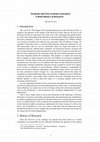
In order to describe the origin of the sectarian movement in the Dead Sea Scrolls, it is necessar... more In order to describe the origin of the sectarian movement in the Dead Sea Scrolls, it is necessary to distinguish between writings that have been adopted by the movement and writings that have their origin within the movement. Obviously not all texts in this impressive collection derive from the movement itself. This is why the distinction between sectarian and non-sectarian literature was introduced early on in research on the Dead Sea Scrolls. Over the course of decades this distinction was further elaborated and methodically clarified by different scholars working on different writings (e.g., Devorah Dimant, Carol Newsom, Armin Lange). In recent years, however, the distinction has come under criticism due to a more elaborated consideration of authoritative texts in the formation of this movement and new insights in the social structure (cf. Florentino García Martínez), so that both the practicality and benefit of this distinction are currently the subject of controversial debate. In this paper, I describe the complexity of this methodological discussion in the history of research.
This unpublished draft serves as a preparation for my article in John J. Collins/ Ananda Geyser Fouché (ed.), Emerging Sectarianism in the Dead Sea Scrolls, STDJ 141, Leiden: Brill, 2022, in which I propose some clarifications concerning the distinction of sectarian and non-sectarian literature, and apply them to the Songs of the Sabbath Sacrifice (4/11QShirShabb).
Book Reviews by Michael R. Jost

Daniel Stökl Ben Ezra presents a comprehensive and broad introduction to Qumran Studies. Thus, th... more Daniel Stökl Ben Ezra presents a comprehensive and broad introduction to Qumran Studies. Thus, this book replaces the German translation of James C. VanderKam, The Dead Sea Scrolls Today (Grand Rapids: Eerdmans, 1994), which was published in 1998 and is now out of print. In the foreword, Stökl Ben Ezra explicates his conviction that the study of ancient Judaism can only proceed by the parallel study of all ancient Jewish sources, whereby philological, historical and archaeological methods, as well as religious, social and, more recently, computer scientific approaches, should be considered. This interdisciplinary approach characterizes the entire book. Part 1 offers a historical and philological introduction. Chapter 1 traces the history of discovery and research of the Qumran scrolls, followed by an introduction to codicology, transcription, and palaeography in chapter 2, and an introduction to the reconstruction and edition of the Scrolls in chapter 3. In this way, Stökl Ben Ezra explains the path from the discoveries to the study of the fragments and to the text-critical editions, which helpfully demonstrates the complexity of the work with the edited texts. In chapter 4, Stökl Ben Ezra offers a (very) short history of Judea in the Hellenistic-Roman period and in chapter 5 he describes the religious movements in Judea in late antiquity, with a special focus on the Essenes. The chapter discusses the different sources on the Essenes (Josephus, Philo, Pliny the Elder, Dio Chrysostom), as well as the question if and how the yaḥad can be identified with the Essenes-a question which Stökl Ben Ezra answers in the affirmative. Part 2 is dedicated to archaeological observations. In chapter 6, Stökl Ben Ezra presents methodological considerations on archaeology and the different propositions regarding settlement phases. Chapter 7 discusses life in and around Khirbet Qumran on the basis of the archaeological finds (buildings, cemeteries, caves, ʿEin-Feshka, pathways around Qumran, as well as an excursus on other manuscripts found in the Dead Sea area). In chapter 8, Stökl Ben Ezra examines the purpose of the buildings in Qumran (fortress, villa, pottery workshop) and adds an excursus on the yaḥad Ostracon, though without offering an original reading or interpretation of this ostracon. Chapter 9 is devoted to the Scrolls. Stökl Ben Ezra presents a very short overview on the texts found in the Qumran caves and evaluates the identity of the owners of this collection, arguing for a distinction between "sectarian" and "non-sectarian" literature. Part 3 is entitled "Die Geburt der ältesten Buchreligion: Die Rollen von Qumran und die Hebräische Bibel." In chapter 10, Stökl Ben Ezra offers a
Rez. von Jan-A. Bühner, Jesus und die himmlische Welt. Das Motiv der kultischen Mittlung zwischen... more Rez. von Jan-A. Bühner, Jesus und die himmlische Welt. Das Motiv der kultischen Mittlung zwischen Himmel und Erde im frühen Judentum und in der von Jesus ausgehenden Christologie, TANZ 65 (Tübingen: Narr Francke/Attempto, 2020), in: ThLZ 12 (2021), S. 1196-1199.
Theologische Zeitschrift, 2020
Kurze Rezension der empfehlenswerten Einführung von Matthieu Arnold in das Leben und Werk Oscar C... more Kurze Rezension der empfehlenswerten Einführung von Matthieu Arnold in das Leben und Werk Oscar Cullmanns
Theologische Zeitschrift, 2017
Michael R. Jost, review of Defending Substitution. An Essay on Atonement in Paul, by Simon Gather... more Michael R. Jost, review of Defending Substitution. An Essay on Atonement in Paul, by Simon Gathercole, ThZ 2/73 (2017), 195–196.








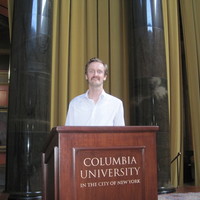


Uploads
Books by Michael R. Jost
Open Access: https://www.mohrsiebeck.com/buch/briefwechsel-1926-1967-9783161616297
Communion with Angels in Earthly Worship. Studies on Qumran and New Testament Texts.
The motif of liturgical communion with angels appears in early Jewish and New Testament texts. Michael R. Jost offers the first exegetical analysis of all relevant passages from the Dead Sea Scrolls and the New Testament and places them within traditio-historical developments from the Hebrew Bible to rabbinical and patristic texts. By giving special consideration to the respective performances of liturgical texts, the author reconstructs each groups’ experience of angelic communion. In his analysis of the liturgical communion of the yaḥad, Jost presents new insights not only for Qumran research but also for New Testament scholarship and the understanding of the early Christian communities and communal liturgies.
Der vorliegende Sammelband dokumentiert die Beiträge einer Tagung an der Theologische Fakultät der Universität Zürich zur Beziehung von Gottesdienst und Engeln in antik-jüdischer, rabbinischer, neutestamentlicher, frühchristlicher, liturgiegeschichtlicher und systematischer Perspektive.
Articles in German and English
Book chapters / articles by Michael R. Jost
I present the findings in three steps. I begin with the texts from Qumran, whose origin are assumed to be in the yahad. Then, I bring in insights from 1 Enoch, which reveal a different understanding in certain aspects. Finally, I evaluate these insights from the texts of the yahad and 1 Enoch in relation to the study of the Apocalypse of Peter.
Ich gehe der Frage nach, was der 1. Clemensbrief von Paulus weiss und woher er diese Kenntnisse hat.
Traces of the Apostle Paul in 1Clem. Roman reminiscences between living tradition and literary reception. I explore the question of what the 1st Letter of Clement knows about Paul and where it got this knowledge from.
The search for the origin of the sectarian movement in the Dead Sea Scrolls is related to the question of the origin of the Dead Sea Scrolls. But not all texts in the Dead Sea Scrolls are connected in the same way to the community that gathered them. So, what is the relationship of this literature to the movement? Which writings originate from this community, so that we can see its self-understanding in it? Which writings were merely transmitted and copied by the community (like the biblical writings, for example)?
In the following, I will systematize the complexities that have been uncovered in history of research and propose some clarifications for future research. Then, I will use the Shirot Olat ha-Shabbat as a test case. I will argue that the aim behind this distinction is still valid and should not be abandoned. But the distinction needs to be modified and refined according to the new insights.
"Ich sage euch nicht, dass ich den Vater für euch bitten werde". So lautet eine überraschende Formulierung im Munde Jesu in Joh 16,26b, denn sie steht in einer gewissen Spannung mit der intercessio Jesu, die an anderen Stellen des Neuen Testaments zur Sprache kommt (1Joh 2,1). Vertritt Jesus die Gläubigen etwa nicht im Gebet? Welcher Sachverhalt drängt in der Erzählung Jesus dazu, diese etwas umständliche Negativformulierung anzuführen? Diese Wendung lässt aufhorchen, nicht in ihrer Aussage an und für sich, sondern weil sie auf eine tieferliegende Frage zu antworten scheint. Offenbar muss eine falsche Ansicht korrigiert werden, die das persönliche Bittgebet der Jünger Jesus delegiert. Dem hält Jesus hier die Liebe des Vaters zu den Jüngern entgegen (Joh 16,27). Die Jünger können sich selbst an den Vater wenden. Im Kern soll also die Beziehungsstruktur im Bittgebet präzisiert werden.
Demzufolge soll im vorliegenden Beitrag die Beziehungsstruktur von Vater, Sohn, Heiliger Geist und Jünger im Bittgebet näher untersucht werden, um letztlich eine Interpretation dieser überraschenden Formulierung in Joh 16,26 bieten zu können. In drei Schritten nähern wir uns dabei diesem Ziel. Im ersten Teil untersuche ich, wie das Bittgebet der Jünger in den Abschiedsreden zur Sprache kommt. Von besonderem Interesse sind dabei die Beziehungen, wie sie in diesen Belegstellen beschrieben werden. Danach wende ich mich im zweiten Teil den Parakletsprüchen zu. Diese sind besonders bedeutsam, um das Verhältnis der nachösterlichen Gemeinde zu Gott Vater, Sohn und Heiligem Geist zu beschreiben. Im dritten Teil führe ich die gewonnenen Erkenntnisse hinsichtlich des Bittgebets der Jünger und der Beziehungsstruktur in den Parakletsprüchen zu einer Interpretation von Joh 16,26 zusammen und diskutiere die Ergebnisse mit Blick auf neuere systematische Beiträge zum Bittgebet.
Abstract
The Songs of the Sabbath Sacrifice (4Q400-407; 11Q17 and Mas1k), also known as Angelic Liturgy, unveils the service of the angelic priests in the heavenly presence of God. This general observation shows the importance of the priestly task, but at the same time it leaves the earthly dimension. In this article I analyze the impact of the liturgy and communion with angels on the priesthood. This allows to clarify the significance of this composition for the community that transmitted this circle of 13 songs. First, I look at some general information on the manuscripts and the contents of these Songs. Secondly, I describe the priestly elements. This will result in an ambivalent conclusion. Priesthood is indispensable but at the same time it is not determining the community. It is the liturgy that is constitutive. Thus, in the third place, I show the importance and influence of this liturgy for the self-identification and understanding of the liturgical reality of the yaḥad. Indeed, I present an interpretation of the Songs of the Sabbath Sacrifice in the context of the other Dead Sea Scrolls, although the possibility that this composition precedes the yaḥad is discussed.
In acht thematischen Abschnitten bringe ich in dieser Response die Beiträge von Christina Hoegen-Rohls und Henning Theißen miteinander ins Gespräch und biete weiterführende Impulse zur Deutung des Bekenntnisses der Auferstehung des Fleisches und eines ewigen Lebens - und das alles in knappen 11 Seiten!
1. Vor der Auferstehung steht der Tod.
2. Die Auferstehung Jesu und die Auferstehung der Toten.
3. Der Tod: Das Nichtige, das sich selbst tötet, oder der Feind, den Gott sich selbst unterwirft?
4. Der Tod als Transitus bei Paulus: Philipper 1,19-24 und die existenzielle Bedeutung des Bekenntnisses der Auferstehung
5. Steht die Metaphorik des Aufbrechens im Widerspruch zum Auferstehungsglauben?
6. Die seelsorgerliche Relevanz des Auferstehungsglaubens.
7. Die individuelle Auferweckung und allgemeine Totenauferstehung.
8. Auferstehungshoffnung als Merkmal der Einheit des Neuen Testaments und wesentliches Element des christlichen Glaubens.
Ich beleuchte in vier Schritten den Beitrag Cullmanns. Zuerst skizziere ich Cullmanns Werdegang mit besonderer Berücksichtigung der Orte, die für sein Petrusbuch bedeutsam waren. Zweitens führe ich in das Buch »Petrus. Jünger – Apostel – Märtyrer« und die darin vertretenen Thesen ein. Danach beschreibe ich im dritten Abschnitt die bedeutende Wirkungsgeschichte dieser Monographie, bevor viertens als Fazit der bleibende Beitrag Cullmanns für die gegenwärtige Petrus-Forschung festgehalten wird.
Dabei zeigt sich, dass die historische Analyse Cullmanns auch heute noch in ihren Grundzügen die Forschung bestimmt. Dass diese Arbeit aber zugleich auf Widerspruch stieß, war mit Blick auf seine Deutung der Rolle des historischen Simon Petrus für die Kirche der Gegenwart zu erwarten. Seine profilierte Stellungnahme machte ihn zu einem anspruchsvollen und eigenständigen Gesprächspartner im ökumenischen Gespräch und zu einem bleibenden Vorbild für relevante christliche Theologie.
A very short interpretation of the silence in heaven in the Apocalypse of John 8.1-3.
published in:
Konstruktiv. Theologisches aus Bern (Beilage zum bref Magazin), N°43/2019, 5-6.
Drafts by Michael R. Jost
This unpublished draft serves as a preparation for my article in John J. Collins/ Ananda Geyser Fouché (ed.), Emerging Sectarianism in the Dead Sea Scrolls, STDJ 141, Leiden: Brill, 2022, in which I propose some clarifications concerning the distinction of sectarian and non-sectarian literature, and apply them to the Songs of the Sabbath Sacrifice (4/11QShirShabb).
Book Reviews by Michael R. Jost
Open Access: https://www.mohrsiebeck.com/buch/briefwechsel-1926-1967-9783161616297
Communion with Angels in Earthly Worship. Studies on Qumran and New Testament Texts.
The motif of liturgical communion with angels appears in early Jewish and New Testament texts. Michael R. Jost offers the first exegetical analysis of all relevant passages from the Dead Sea Scrolls and the New Testament and places them within traditio-historical developments from the Hebrew Bible to rabbinical and patristic texts. By giving special consideration to the respective performances of liturgical texts, the author reconstructs each groups’ experience of angelic communion. In his analysis of the liturgical communion of the yaḥad, Jost presents new insights not only for Qumran research but also for New Testament scholarship and the understanding of the early Christian communities and communal liturgies.
Der vorliegende Sammelband dokumentiert die Beiträge einer Tagung an der Theologische Fakultät der Universität Zürich zur Beziehung von Gottesdienst und Engeln in antik-jüdischer, rabbinischer, neutestamentlicher, frühchristlicher, liturgiegeschichtlicher und systematischer Perspektive.
Articles in German and English
I present the findings in three steps. I begin with the texts from Qumran, whose origin are assumed to be in the yahad. Then, I bring in insights from 1 Enoch, which reveal a different understanding in certain aspects. Finally, I evaluate these insights from the texts of the yahad and 1 Enoch in relation to the study of the Apocalypse of Peter.
Ich gehe der Frage nach, was der 1. Clemensbrief von Paulus weiss und woher er diese Kenntnisse hat.
Traces of the Apostle Paul in 1Clem. Roman reminiscences between living tradition and literary reception. I explore the question of what the 1st Letter of Clement knows about Paul and where it got this knowledge from.
The search for the origin of the sectarian movement in the Dead Sea Scrolls is related to the question of the origin of the Dead Sea Scrolls. But not all texts in the Dead Sea Scrolls are connected in the same way to the community that gathered them. So, what is the relationship of this literature to the movement? Which writings originate from this community, so that we can see its self-understanding in it? Which writings were merely transmitted and copied by the community (like the biblical writings, for example)?
In the following, I will systematize the complexities that have been uncovered in history of research and propose some clarifications for future research. Then, I will use the Shirot Olat ha-Shabbat as a test case. I will argue that the aim behind this distinction is still valid and should not be abandoned. But the distinction needs to be modified and refined according to the new insights.
"Ich sage euch nicht, dass ich den Vater für euch bitten werde". So lautet eine überraschende Formulierung im Munde Jesu in Joh 16,26b, denn sie steht in einer gewissen Spannung mit der intercessio Jesu, die an anderen Stellen des Neuen Testaments zur Sprache kommt (1Joh 2,1). Vertritt Jesus die Gläubigen etwa nicht im Gebet? Welcher Sachverhalt drängt in der Erzählung Jesus dazu, diese etwas umständliche Negativformulierung anzuführen? Diese Wendung lässt aufhorchen, nicht in ihrer Aussage an und für sich, sondern weil sie auf eine tieferliegende Frage zu antworten scheint. Offenbar muss eine falsche Ansicht korrigiert werden, die das persönliche Bittgebet der Jünger Jesus delegiert. Dem hält Jesus hier die Liebe des Vaters zu den Jüngern entgegen (Joh 16,27). Die Jünger können sich selbst an den Vater wenden. Im Kern soll also die Beziehungsstruktur im Bittgebet präzisiert werden.
Demzufolge soll im vorliegenden Beitrag die Beziehungsstruktur von Vater, Sohn, Heiliger Geist und Jünger im Bittgebet näher untersucht werden, um letztlich eine Interpretation dieser überraschenden Formulierung in Joh 16,26 bieten zu können. In drei Schritten nähern wir uns dabei diesem Ziel. Im ersten Teil untersuche ich, wie das Bittgebet der Jünger in den Abschiedsreden zur Sprache kommt. Von besonderem Interesse sind dabei die Beziehungen, wie sie in diesen Belegstellen beschrieben werden. Danach wende ich mich im zweiten Teil den Parakletsprüchen zu. Diese sind besonders bedeutsam, um das Verhältnis der nachösterlichen Gemeinde zu Gott Vater, Sohn und Heiligem Geist zu beschreiben. Im dritten Teil führe ich die gewonnenen Erkenntnisse hinsichtlich des Bittgebets der Jünger und der Beziehungsstruktur in den Parakletsprüchen zu einer Interpretation von Joh 16,26 zusammen und diskutiere die Ergebnisse mit Blick auf neuere systematische Beiträge zum Bittgebet.
Abstract
The Songs of the Sabbath Sacrifice (4Q400-407; 11Q17 and Mas1k), also known as Angelic Liturgy, unveils the service of the angelic priests in the heavenly presence of God. This general observation shows the importance of the priestly task, but at the same time it leaves the earthly dimension. In this article I analyze the impact of the liturgy and communion with angels on the priesthood. This allows to clarify the significance of this composition for the community that transmitted this circle of 13 songs. First, I look at some general information on the manuscripts and the contents of these Songs. Secondly, I describe the priestly elements. This will result in an ambivalent conclusion. Priesthood is indispensable but at the same time it is not determining the community. It is the liturgy that is constitutive. Thus, in the third place, I show the importance and influence of this liturgy for the self-identification and understanding of the liturgical reality of the yaḥad. Indeed, I present an interpretation of the Songs of the Sabbath Sacrifice in the context of the other Dead Sea Scrolls, although the possibility that this composition precedes the yaḥad is discussed.
In acht thematischen Abschnitten bringe ich in dieser Response die Beiträge von Christina Hoegen-Rohls und Henning Theißen miteinander ins Gespräch und biete weiterführende Impulse zur Deutung des Bekenntnisses der Auferstehung des Fleisches und eines ewigen Lebens - und das alles in knappen 11 Seiten!
1. Vor der Auferstehung steht der Tod.
2. Die Auferstehung Jesu und die Auferstehung der Toten.
3. Der Tod: Das Nichtige, das sich selbst tötet, oder der Feind, den Gott sich selbst unterwirft?
4. Der Tod als Transitus bei Paulus: Philipper 1,19-24 und die existenzielle Bedeutung des Bekenntnisses der Auferstehung
5. Steht die Metaphorik des Aufbrechens im Widerspruch zum Auferstehungsglauben?
6. Die seelsorgerliche Relevanz des Auferstehungsglaubens.
7. Die individuelle Auferweckung und allgemeine Totenauferstehung.
8. Auferstehungshoffnung als Merkmal der Einheit des Neuen Testaments und wesentliches Element des christlichen Glaubens.
Ich beleuchte in vier Schritten den Beitrag Cullmanns. Zuerst skizziere ich Cullmanns Werdegang mit besonderer Berücksichtigung der Orte, die für sein Petrusbuch bedeutsam waren. Zweitens führe ich in das Buch »Petrus. Jünger – Apostel – Märtyrer« und die darin vertretenen Thesen ein. Danach beschreibe ich im dritten Abschnitt die bedeutende Wirkungsgeschichte dieser Monographie, bevor viertens als Fazit der bleibende Beitrag Cullmanns für die gegenwärtige Petrus-Forschung festgehalten wird.
Dabei zeigt sich, dass die historische Analyse Cullmanns auch heute noch in ihren Grundzügen die Forschung bestimmt. Dass diese Arbeit aber zugleich auf Widerspruch stieß, war mit Blick auf seine Deutung der Rolle des historischen Simon Petrus für die Kirche der Gegenwart zu erwarten. Seine profilierte Stellungnahme machte ihn zu einem anspruchsvollen und eigenständigen Gesprächspartner im ökumenischen Gespräch und zu einem bleibenden Vorbild für relevante christliche Theologie.
A very short interpretation of the silence in heaven in the Apocalypse of John 8.1-3.
published in:
Konstruktiv. Theologisches aus Bern (Beilage zum bref Magazin), N°43/2019, 5-6.
This unpublished draft serves as a preparation for my article in John J. Collins/ Ananda Geyser Fouché (ed.), Emerging Sectarianism in the Dead Sea Scrolls, STDJ 141, Leiden: Brill, 2022, in which I propose some clarifications concerning the distinction of sectarian and non-sectarian literature, and apply them to the Songs of the Sabbath Sacrifice (4/11QShirShabb).